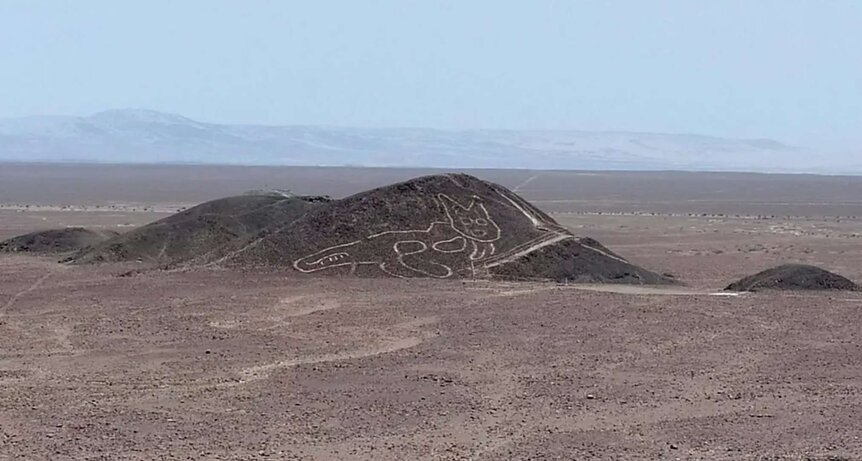Create a free profile to get unlimited access to exclusive videos, sweepstakes, and more!
Here kitty, kitty! Scientists spot new Nazca Lines geoglyph of a 120-foot cat in Peru

It might well be a dog's life, but it's a universal truth that cats actually rule the world. If ever you needed any additional proof of their dominance, look no further than this amazing Nazca Lines geoglyph discovered in southern Peru.
Etched into the rocky earth of a steep Peruvian hillside, this simple, 120-foot cat art is the most recent Nazca Lines discovery and represents a collection of mysterious Pre-Columbian drawings of elongated humanoid figures, geometric designs, trees, plants, and animals created over 2,000 years ago.
According to Peru's Ministry of Culture, the prominent pussycat was accidentally revealed during a project being carried out by archaeologists with the Ministry of Culture-supported Nazca-Palpa Management Plan as they remodeled a natural observation area in the Pampa de Nazca.
Initially, natural erosion obscured the wide-eyed cat outline from the workers, as Mother Nature had nearly erased the ancient feline artwork. But following over a week of careful restoration and conservation, archaeologists resurrected the geoglyph, which harkens back to between 200 B.C. and 100 B.C.
Viewed horizontally in profile, with its head staring outward, the colossal cat dates from the Late Paracas period and predates the well-known figures of the Nasca Pampa.
These crude feline representations crafted by the Paracas culture are well-known, signature symbols found on the ancient people's many ceramic and textile contributions. Inspected from ground level, this historic kitty's form lines measure between 12 and 16 inches wide, with its length from tip to tail totaling nearly 121 feet.
In recent years, researchers have located and identified between 80 and 100 never-seen, smaller geoglyphs in the Nazca and Palpa valleys, the entirety of which predate the Nazca culture. Most are found on hillsides and, per archaeologist Johny Isla, director of the Nazca Lines conservation mission at the Ministry of Culture, belong to an earlier cultural tradition.
"It might seem surprising that new designs are still being found, but we know there are more out there," Isla told local press, according to the Evening Standard. "In the last few years, the use of drones, which enable us to take images of the sides of hills, makes that possible."
Located in the arid Peruvian coastal plain south of Lima, the Nazca Lines geoglyphs and the pampas of Jumana were scratched on the rough surface of the ground between 500 B.C. and A.D. 500. They remain one of archaeology's most interesting enigmas due to their numbers, variety, and proliferation.
Scientists and geologists believe these strange scrapings had some sort of ritual astronomical or ceremonial function, but can't be more specific.





























